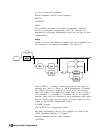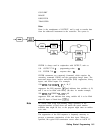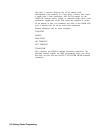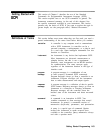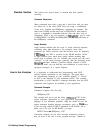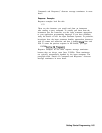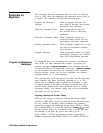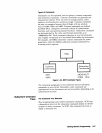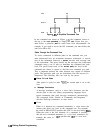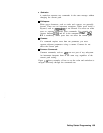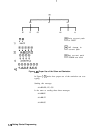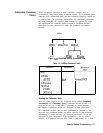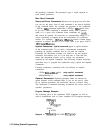
Essentials for
Beginners
This subsection discusses elementary concepts critical to first-time
users of SCPI. Read and understand this subsection before going on
to another. This subsection includes the following topics:
Program and Response
Messages
These paragraphs introduce the
basic types of messages sent between
instruments and controllers.
Subsystem Command Trees
Subsystem Command Tables
Reading Instrument Errors
Example Programs
These paragraphs describe the
tree structure used in subsystem
commands.
These paragraphs present the
condensed tabular format used for
documenting subsystem commands.
These paragraphs explain how to read
and print an instrument’s internal
error messages.
These paragraphs contain two simple
measurement programs that illustrate
basic SCPI programming principles.
Program and Response
To understand how your instrument and controller communicate
Messages
using SCPI, you must understand the concepts of program and
response messages. Program messages are the formatted data sent
from the controller to the instrument. Conversely, response messages
are the formatted data sent from the instrument to the controller.
Program messages contain one or more commands, and response
messages contain one or more responses.
The controller may send commands at any time, but the instrument
sends responses only when specifically instructed to do so. The
special type of command used to instruct the instrument to send
a response message is the query. All query mnemonics end with a
question mark. Queries return either measured values or internal
instrument settings. Any internal setting that can be programmed
with SCPI can also be queried.
Forgiving Listening and Precise Talking
SCPI uses the concept of forgiving listening and precise talking
outlined in IEEE 488.2. Forgiving listening means that instruments
are very flexible in accepting various command and parameter
formats. For example, the synthesizer accepts either : POWer : STATe
ON or :POWer:STATe 1 to turn RF output on. Precise
tallcing
means
that the response format for a particular query is always the same.
For example, if you query the power state when it is on
(using : POWer : STATe?), the response is always 1, regardless of
whether you previously sent : POWer : STATe 1 or : POWer : STATe ON.
1-66 Getting Started Programming





